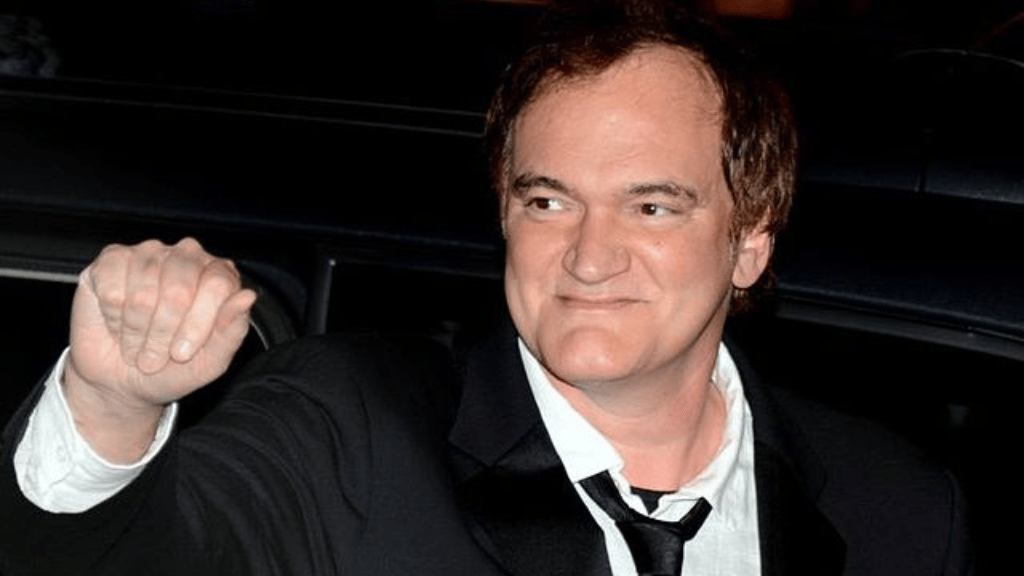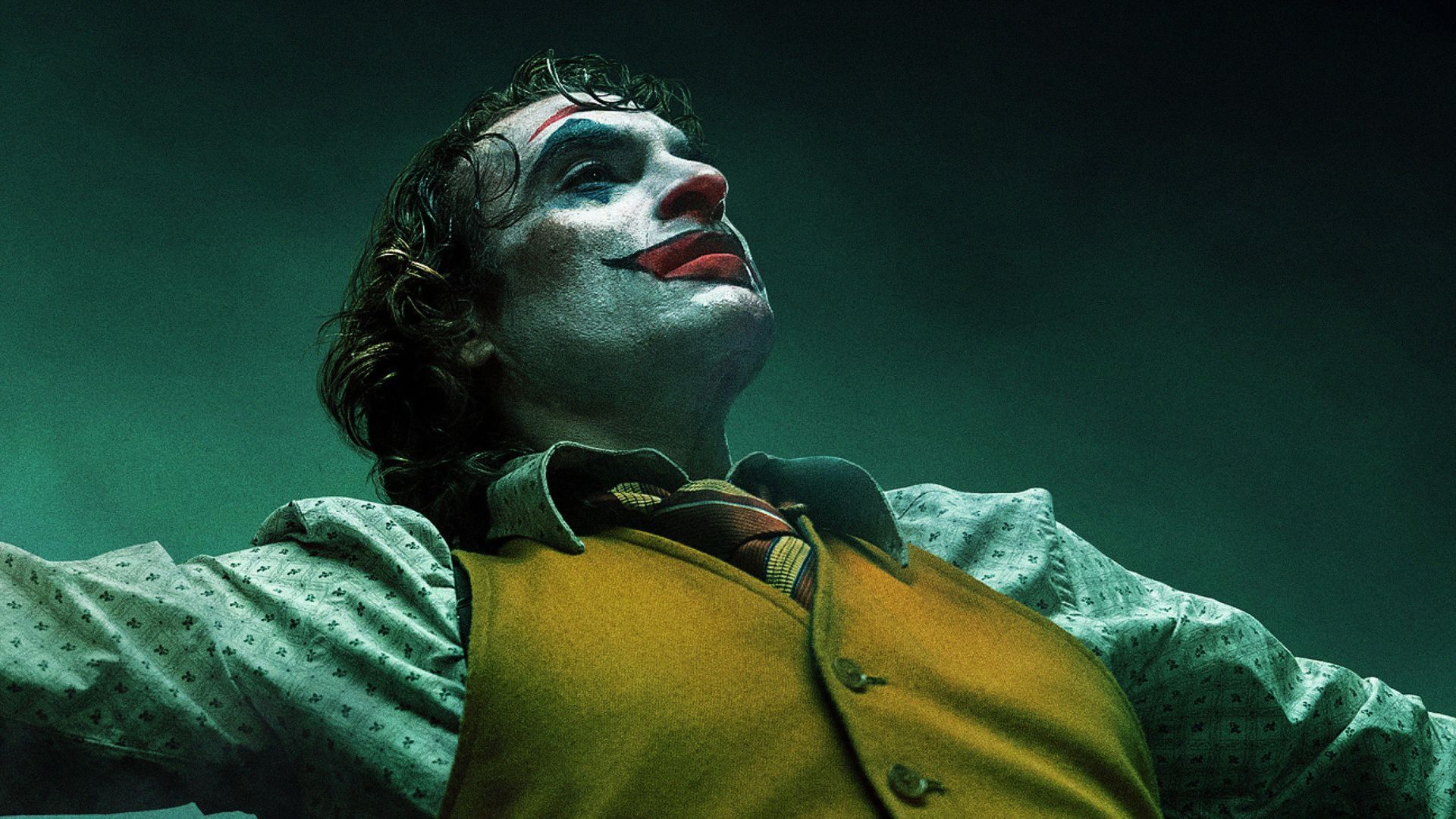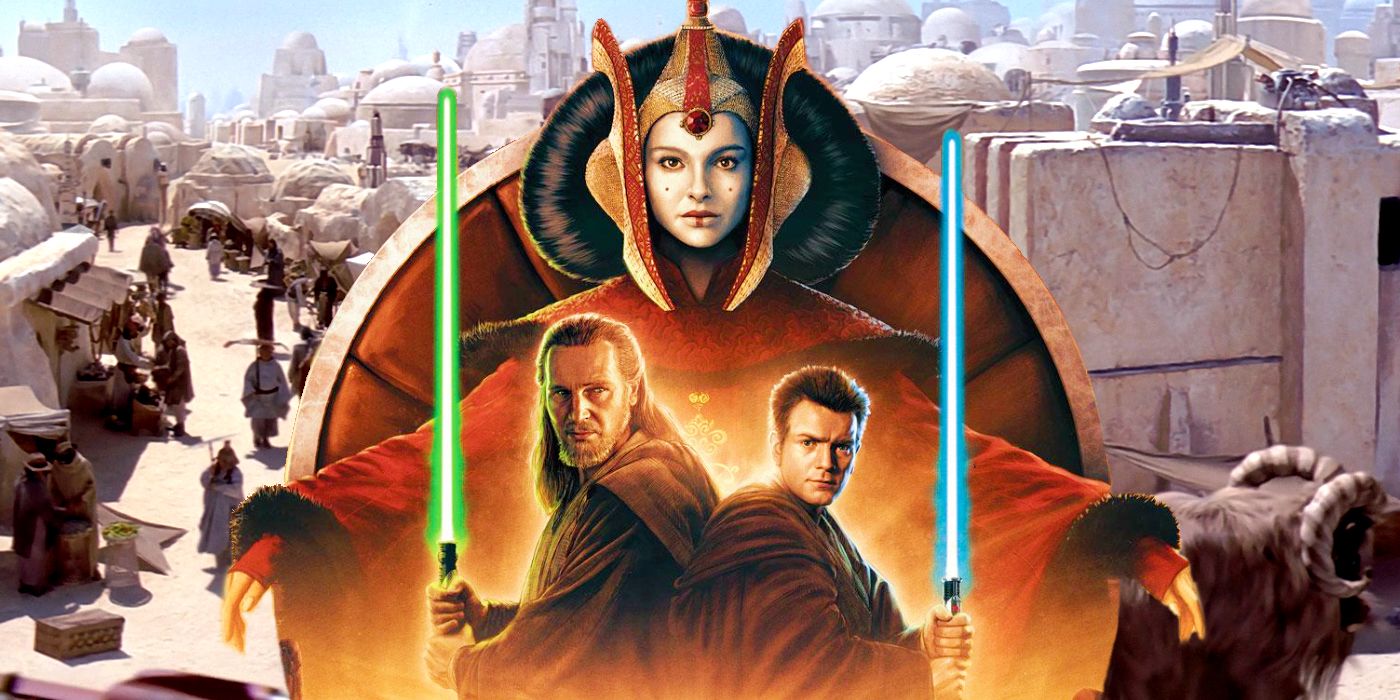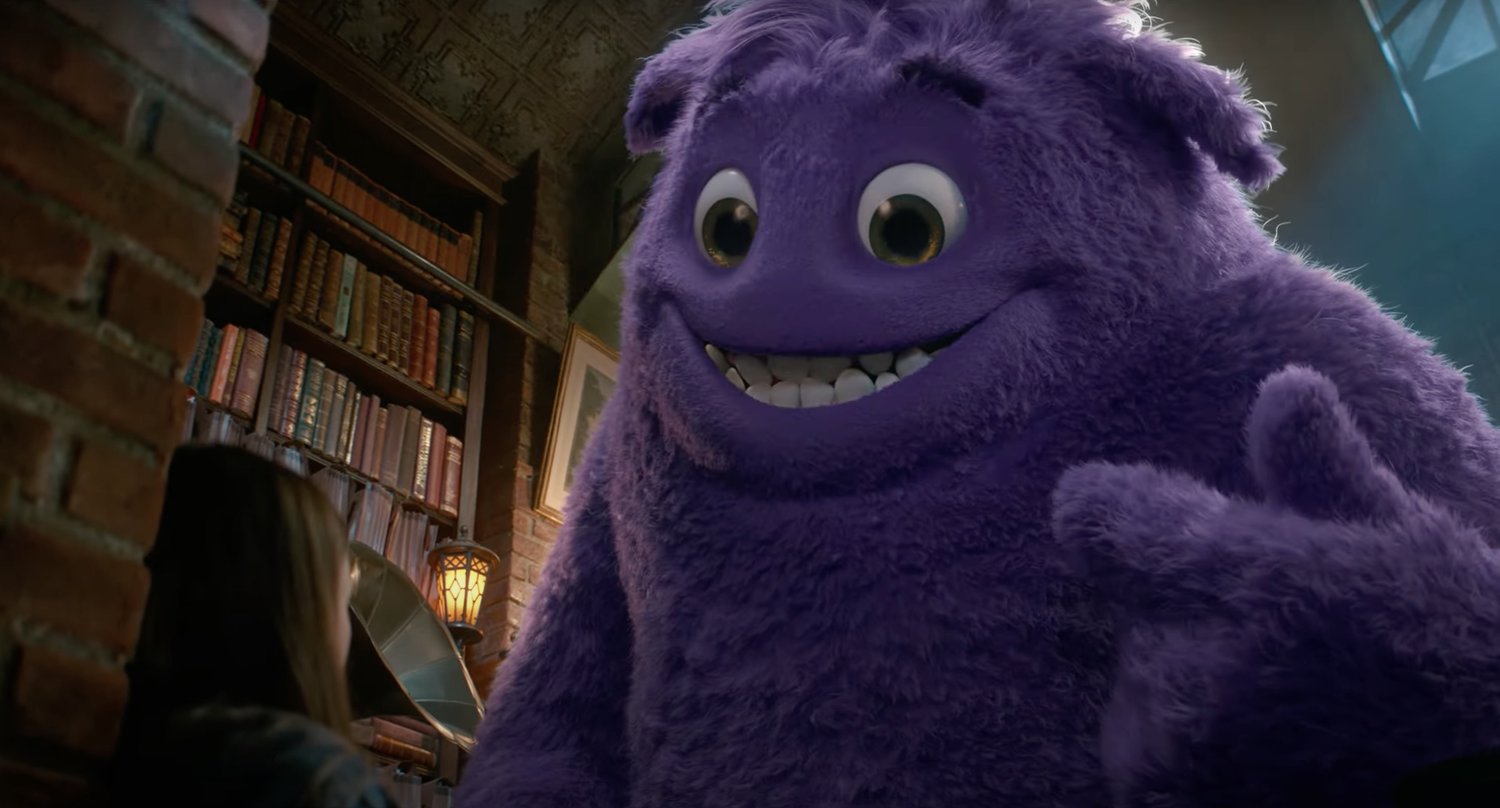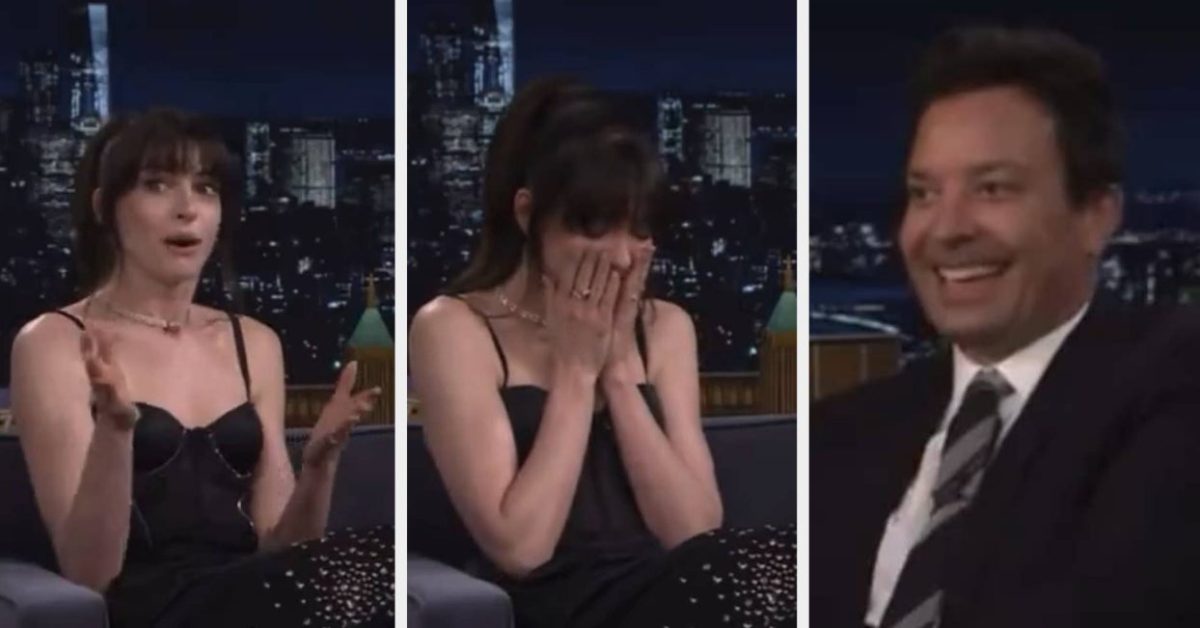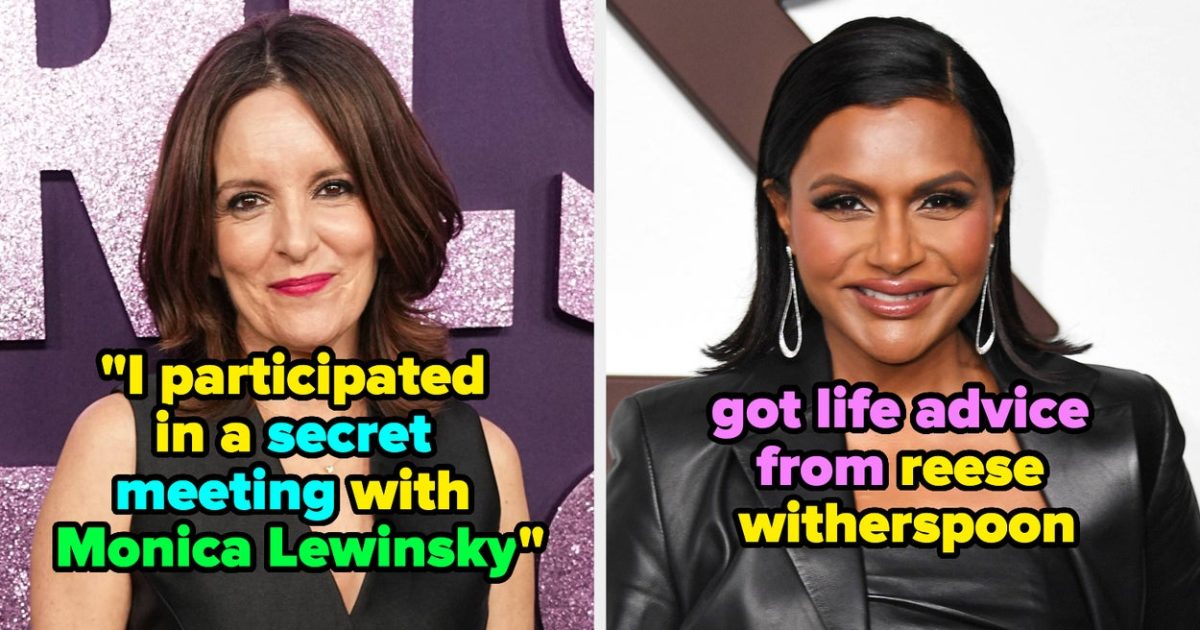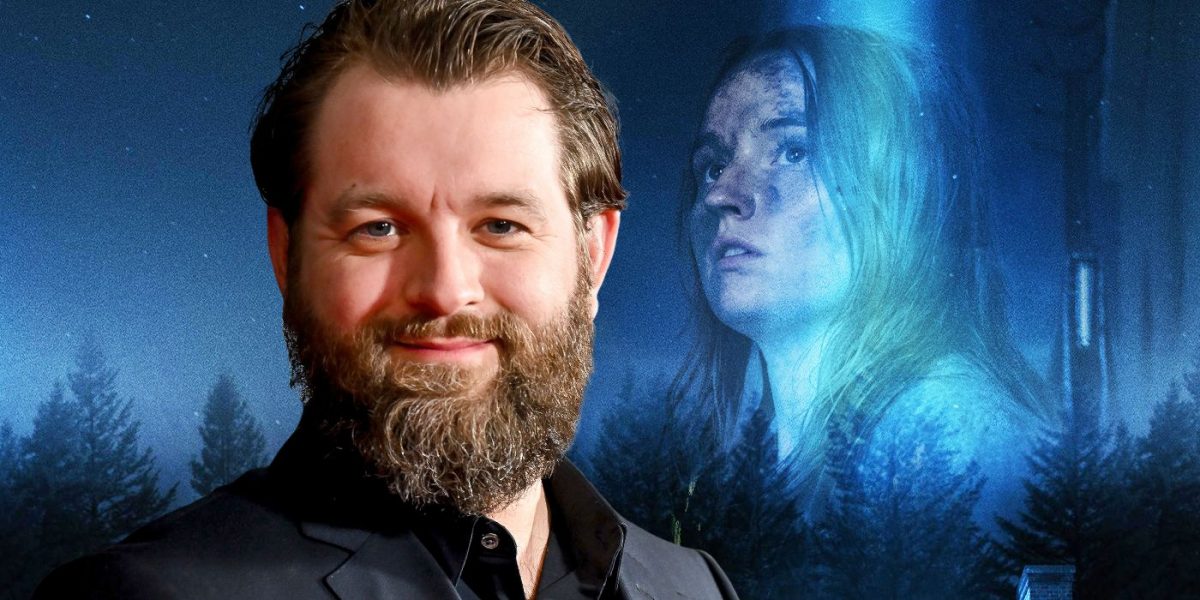
‘No One Will Save You’ Director Answers Every Question You Have [Spoilers]
Sep 28, 2023
The Big Picture
Brian Duffield’s film “No One Will Save You” combines horror and sci-fi genres through an alien invasion, with minimal dialogue. The film features a compelling performance from Kaitlyn Dever, who plays an isolated social outcast forced to fend for herself against otherworldly creatures. Duffield discusses the challenges of production, including weather interruptions and the decision to include aliens in the story, as well as the creation of a unique alien culture and language.
[Editors Note: The following contains spoilers for No One Will Save You.]No One Will Save You is writer-director Brian Duffield’s sophomore feature film and proves no genre will box him in after 2020’s dark coming-of-age comedy Spontaneous received widely positive reviews. Starring Kaitlyn Dever (Booksmart), No One Will Save You explores the horror and sci-fi genres through grief expounded by an alien invasion, and it does so without hardly uttering a word.
Brynn (Dever) is a social outcast living on the fringes of town, confining herself to the walls of her home. Already completely alone, Brynn’s isolation turns nightmarish when aliens make first contact, and she’s left to fend for herself against a legion of otherworldly creatures. Backed by a score from Duffield’s friend and composer Joseph Trapanese (The Greatest Showman) and the Academy Award-nominated sound design team behind Matt Reeves’ The Batman, No One Will Save You is a unique and tension-filled race for survival, an “experience” meant to be felt and digested.
Following a special theatrical screening in Los Angeles, hosted by Collider’s Steve Weintraub, Duffield dove into the conception of his second directorial feature, from how the idea came to be and evolved over time to what we see today. We find out how Dever joined the project, the many challenges production went through while filming, how Peter Jackson and Slenderman influenced the script, and what’s in Duffield’s alien bible. The writer-director also talks about the VFX, why streaming with Hulu is an ideal format for this movie, and even gives backstory on the aliens and how Star Trek may have inspired them. For all of this and tons more, check out the full interview in the transcript below.
COLLIDER: How many of you knew before coming in here how much dialogue was in this movie?
BRIAN DUFFIELD: 20th [Century] was super nervous about people finding out because I think people think silent means quiet and boring. It’s loud and probably not boring.
Image via 20th Century Studios
It’s pretty crazy, though. If I’m not mistaken, this was a spec script.
DUFFIELD: Yeah, it was a spec script that I packaged with the producers and Kaitlyn. So when it went out to the town we were like, “We’re ready to go if you want to get on board.” So it’s not like a normal spec where you just sell it, and then they fire you.
Did you set out to make a movie that was this alien kind of movie, and then you realized, “I don’t need dialogue?” Talk a little bit about where the idea came from versus the no-dialogue thing.
DUFFIELD: The dialogue came in late. Like, I was like halfway done, and I had typed in the final draft– When you do a character speaking dialogue, you have to type it in, but if you’ve written it before then it will autofill, and then I realized I had to type it in the whole way, like the very long name of Brynn, and that was like 45 pages in, and then it was just her saying, “I…” and then she gets spit on. And then I was like, “Well, I guess I haven’t written any dialogue yet.” [Laughs] I don’t outline, and so I just kind of go where the winds take me. So there’s a lot of accidental and embarrassing discoveries like that where you think that was the plan, but it wasn’t. There weren’t aliens in the movie when I started. [Laughs] I was like, “Whoops.”
I’m so curious, what was it before aliens, or was it like you’re writing, and then all of a sudden, you realize, “Oh, wait a minute…?”
DUFFIELD: No, I had the character of Brynn because I am really obsessed with the movie Heavenly Creatures, which if you haven’t seen it, it’s Peter Jackson before Lord of the Rings, and it’s about two girls in their young teens that form a very intense bond and then kill one of the girls’ mothers. And it’s a true story. Then a couple of years, like a decade or two ago, it was revealed that one of the girls grew up, changed her name, and became a very famous author, and I thought that was a very interesting character. Then the Slenderman stabbings happened right before I was about to have kids. I just thought it was very interesting about these, like, 10-year-olds that had done something so terrible but were also 10 and then had their whole life ahead of them to figure out all of that insanity. It felt like a very interesting character.
So I started writing it, and I kind of knew all of the details about Brynn, and I was like, “I feel like I’d be too bored watching the miserable Sundance version of this.” Then, subsequently, I had a second final draft filed that was the alien walking in the front door five minutes into the movie, but I think people are used to, like, the end of Signs, which is a movie that I love where the alien finally walks into the living room at the very end, and I thought that was an interesting place to start a movie. Then I probably, like, spilled water on the keyboard or something, and I merged the two final drafts, and I thought, “Oh, this is really interesting where when the world ends, it’s gonna end for everybody, including people that are going through everything that the Brynn character is going through that gets rudely interrupted by the aliens.” The aliens also have insight and curiosity about this character that’s bizarrely resilient, even though there’s not really any purpose to her life in a lot of ways. She just kind of lives at home alone, doesn’t want a relationship, doesn’t have any of the normal human experience kind of things, and I thought that was an interesting way into an alien invasion movie, having the least equipped person possible, but that was also going through a lot of emotional bullshit outside of aliens in the middle of it. So I don’t know if it makes any sense, but in my brain it did.
Image via Touchstone Pictures
Ultimately it works so that’s all that matters. Did you come up with any sort of structure of rules or a bible on what the aliens can and can’t do, what their powers are?
DUFFIELD: It was always about how to make Kaitlyn’s life as miserable as possible in the movie. Especially if you’re introducing an alien five minutes in, you don’t want it to just kind of be stagnant. We show the shark extremely early, and you’re not wanting to be like, “Well, she’s already beaten the shark. We’re all good here.” So yeah, it’s about coming up with a culture for these guys and building out a language with them with the sound guys. Also, there’s a lot of weird religious aspects to them, which is probably some childhood trauma of my own. [Laughs] But yeah, building out the idea that these are very intelligent creatures that came here and they feel like they are on somewhat of a faith-based journey, like most conquerors have been. So that felt like building that out and then giving each of the different subspecies different roles and then there’s subspecies that aren’t in the movie, and all that nerdy shit.
How long did you actually have to shoot this movie?
DUFFIELD: I was like 30, 35, or 36 days in Louisiana. It’s a little blurry because we got a little bit of bonus time because we had so many shutdowns because of lightning and tornadoes. Once you’re in it it’s such a blur, but I know it was over 30 less than 40.
So Kaitlyn’s performance is fantastic, anchors this movie, does not work without her.
DUFFIELD: Thanks, (casting director) Jenny [Jue].
What day of the shoot, after you were putting her through the wringer—because you’re forcing her to deal with so much—was she like, “I hate you?”
DUFFIELD: She’s a really good actor, so I never caught on to that, but I’m sure she does. I think when I first talked to her about it, I think she was really stoked about the physical challenge of it. She was very excited about wires and running and all of the fun toys and tricks that I think hadn’t been in the last couple of things that she’s done. She was just super gung-ho, and she’s so great. She’d be screaming and weeping on camera, you call cut, and then she puts on a playlist and dances. Then it’s like action, and she’s screaming and crying again. It’s such a superpower that I don’t have.
I don’t think many people have that.
DUFFIELD: My toddlers have it.
Which shot or sequence in the film was the one that you were like, “Why did I put this in the script, and can we cut it out?”
DUFFIELD: Oh, man. I’m a pessimist, so there’s a lot of them. I think definitely all the exterior night work because of the lightning storms because when you have lightning, you have to shut down for like 15 minutes after there’s a lightning blast. Then we’d be in Louisiana, and so it’d be like, every two minutes, there would be another lightning blast, and you don’t get more daylight. Night is coming no matter what. So that was very stressful. You would see scenes and be like, “Well, that scene is not gonna be in the movie anymore because it was set at night outside.”
Then, bizarrely, Kaitlyn never wound up in a UFO until post, and that was because it was a different location, and we had so much lightning and weather that we didn’t shoot it. Then, at the time, we were like, “Well, the emergency is that Kaitlyn’s paralyzed anyway, so we can shoot her on blue screen because she’s in the light beam.” Then, in post, we’re like, “We don’t really know what to do,” because we have Kaitlyn in a light beam and nothing else, which was stressful. We had plates for the location, but it’s not the same. That’s why the camera is never moving, really, in the UFO because it was like, we had like 30 minutes to just shoot random stuff of Kaitlyn acting paralyzed. Then, not even early in post, like really late in post, someone was like, “She should just be in the UFO.” And then it was like, “Oh yeah, that was a really great idea I should have had three years ago.” So sometimes it’s things like that where you’re like, “I’m an idiot for trying to make an exterior night movie in Louisiana in the middle of storm season.” But then it also works out where you get to convince 20th to give you money to make a UFO.
Image via Hulu
Again, ultimately, it all worked out. Who do you trust for honest feedback that will actually give you honest feedback?
DUFFIELD: Jenny. [Laughs] And then a couple of the crew members, but beyond that, I have the thing where if people are positive, I assume they’re lying, just in general. Like even at my wedding. That’s just being in Hollywood too long, probably. No, I just got really into the habit, at the start of my writing career, I got really discouraged when I would pitch people, like, “Oh, I’m gonna write this,” and then you would get a, “Oh, interesting…” kind of reaction. And you’re like, “Oh, I was hoping that people would be, like, really excited,” and then they were really like blasé. Then I wouldn’t write those ideas. Then, after a while, I was like, “I really like this idea. I should follow through and write it.” And I remember the people that were like, “Eh” when I said the idea all loved the script. I thought that that was a lesson where I was like, “I should, as much as I can, not listen to people that get into my head and make me second guess the things I’m trying to create.” That’s served me well.
But also, on this one it was really great having a studio and having a crew. It was very clear to me that we’re all making the same movie, which is also, I think, very rare, at least in my experience. It was great because if someone challenged me, I wasn’t like, “Well, they just don’t get it,” or any of like the arrogant asshole traits I probably have. It was like, “Well, they are all trying to make the best version of this so there is probably a lot of validity to that.” I think it was just about building the right family, which took me, you know, 12 years to kind of do. This was the first time where I was like, oh, this is what it should be where everyone feels, even if they’re disagreeing, the goal is the same, and you trust that the goal is the same. It took a long time to kind of find those people where it was like, we’re all aiming at the same target because a lot of times it feels like you’re aiming in completely different directions with studios or cast or crew or whatever.
One of the things that I love about this movie is that it doesn’t explain things, and it comes because you didn’t have a $200 million dollar budget. The more money you spend, the more the studios, I think, want to make the audience feel like– You know what I mean?
DUFFIELD: So we’re not theatrical. [Laughs]
Talk a little bit about the freedom that comes when you’re not spending all the money in the world because you got to do things in this movie that a lot of other films I don’t think can get away with.
DUFFIELD: Yeah, it was exactly that. I think the thing that’s really cool about the 20th/Hulu of it all is that they’re able to take those risks where they’re not making movies that have to open to Avengers money. They can make movies that are a little bit more of an aggressive swing. Even like Prey. Prey is definitely a popcorn movie, but the concept of Prey…I think it needed to be this moment in time where this platform needed content that was gonna be like, “Well, that at the very least sounds very unique and interesting.” And that was always something that was encouraged by [Steve] Asbell and JR at 20th, where they really got the movie. They were the same guys that did Prey. I think they were just excited that they’re like, “Oh, we haven’t seen anything like this, and that’s cool,” as opposed to what would be a nightmare for a lot of other studios, especially in the theatrical space.
I wanna seriously commend those guys for making Prey and this because both are just great movies.
DUFFIELD: Yeah, Dan [Trachtenberg] and I are alumni from the same school, so they’re probably just, “If it’s Temple University, that’s it!”
Sometimes directors have very long first cuts or assembly cuts, and then the finished version is way shorter. What did you have for an assembly cut or a director’s cut that you were like, “It’s never getting shorter?”
DUFFIELD: It’s never getting shorter than this. But I think that the assembly was like 1:50-something. We didn’t have a lot of time, so there wasn’t a ton of extra stuff, and there were even a couple of scenes that were cut. But for the most part, there wasn’t a ton. It was just really making it as lean and mean as possible. A lot of it was like, “How little can you have in the first seven minutes? How much do you need in the middle of the movie when she’s away from home so it doesn’t feel like it was a very quick stop?” So it was just finding that balance, and then it was just finding the balance of like…there’s a little bit more context about her mom and her house and stuff like that where it’s context, but do you really care? You just want to see aliens, you know? I think we talked a lot at the studio about ambiguity versus annoying, which I think is a really fine line. It’s subjective, and everyone will have a different thing where they’re like, “I really like that.” I could go on Reddit and discuss this element of it, and then of people that just also tune out when they’re like, “I’m not being handheld.”
And I think especially in something like this where there is no dialogue, and there’s no ADR ability—you know, I did more ADR on this movie than I have ever done in my life—I think that was about finding out that with exposition, you can be extremely blunt and in your face if it’s not dialogue. That was something we kind of were discovering in post and picking up little insert shots and stuff like that. But in terms of the length, I think when I sold it, I was like, “I want it to be less than 90 minutes.” That was always the goal, and every time the studio saw it, it was over 90 minutes. They were like, “Remember, you said this…” And then I got really pissed because I think the cut was like 87 minutes, and then the credits came in, and they were like six minutes long, and I was like, “Can we make them go faster?” And they were like, “No,” and so, I still feel like a failure. [Laughs]
What is something that you had to fight for in this movie that you’re super happy you fought for, and it worked out?
DUFFIELD: On this one, I can’t think of anything. It’s a really good question. I mean, when we went out with it as a package, with Kaitlyn and the Star Thrower producers and everything, there were definitely places that were like, “If people are not paying attention, they’re not gonna know what’s going on because there’s no dialogue,” and it was kind of like, “Well, that’s not my problem.” I mean, it is my problem, but it was also just like, “Well, then just don’t make an offer on the movie, dude.” If that’s where we’re at, where if they’re on their phone or they’re doing laundry and can’t hear the radio show, they might be lost, and would you be open to changing things so that they could hear what’s going on? And that was just like, “Well, it just doesn’t feel like the right home.” But at the same time, with 20th, they never had a problem with Brynn’s backstory, they never had a problem with the no dialogue, they were like, “She dances at the end? Great.” I don’t know, maybe Prey got them too cocky. But I didn’t have those fights on this, which is probably the first time that I haven’t, so it was really nice.
Sometimes, there’s an unsung hero making a movie or a project. Who might be an unsung hero on this in terms of helping you make it what it is?
DUFFIELD: Everybody, from my assistants, Jeremy [Marshall] and Max, to Kaitlyn. What was really great about this is everyone came to play. Also, creatively, the design guys really came up with a lot of really amazing design stuff at the end that was not in the script, but once they showed me something, it was like that Key & Peele sketch where it’s like, “That’s in the movie!” And then, Joseph Trapanese, who did the score, wrote a lot of the score before we started shooting, which was invaluable, and it was really a great way to get Kaitlyn and the studio and everyone to hear the score and kind of be like, “Oh, I get the tone instantly.” And we didn’t play it during set, but it was just kind of like, “Oh, this is what the movie sounds like. I get it.” It’s such a better way of directing than me speaking. You’re like, “Here’s an amazing score by the guy who did Tron: Legacy.”
Then, a couple of days before we started shooting, we got hit with the really big COVID surge, and my DP got COVID day zero. And then every department pretty much got COVID, and so it was like day 24, I think, that I finally had all of my department heads. So our line producer, Josh—that is a line producer’s nightmare, where they would shut down for me, they would shut down for Kaitlyn, and then everybody else would make it work—he put Aaron Morton, our DP, in a sprinter van that just followed us around, and Aaron would be hacking out his lungs, you know, shooting the movie remotely. Same with other crew members. That was an undertaking. It was day zero, we were at dinner, and Aaron was like, “Oh, I just tested positive for COVID,” and then the next morning at like six or whatever, we were starting and Josh had found a van, and Aaron was in the van, and it was like a sweat box. There was security around the van because 20th thought people were gonna try to break in, which that’s not gonna happen. So, that’s how we shot like the first 10 days of the movie, with Aaron locked in a van, and then other crew started joining. [Laughs]
Image via 20th Century Studios
I’ve seen Babylon, and I know what happens.
DUFFIELD: [Laughs] You can make this like 20 times for one Babylon – sorry, Damien [Chazelle], but we edited next to each other, so it’s okay. But yeah, so it’s all the things where, as a director, they try to tell you things are gonna be fine, and it’s usually bullshit. And Josh, our line producer, his superpower was that it actually was as okay as it could have been because, like, day zero, I was just like, “Well, I should just go home.” Because especially Aaron is like my right-hand guy. I’ve done everything with him, and to all of a sudden have him be like, “Well, I’m not gonna be there for the first chunk of the shoot,” I was like, “Well, this is sunk.” Then Josh figured out, “Oh, I can put him in a van that has to be x amount of feet away from the stage, and then I’ll give you an earwig and some of the camera guys, and we’ll figure it out.” It was hard, but after day one, I was like, “This is gonna work,” and Aaron was miserable, and everyone was miserable, but you’re like, “Oh, it’s a movie, and a couple of hours ago it was a shutdown.”
Talk about the ending and how you figured it out.
DUFFIELD: I really wanted to direct a musical, and no one would let me, so joke’s on them. No, I knew the ending needed to have something communal for Brynn. That, and I love the character Brynn, and I know Kaitlyn does, too, and I think we were both really protective of her. She’s dealt with a lot of emotional stuff before the movie even started, and then we really just kick her ass up and down the whole movie. It felt like you could do the—and I love A24—but you could do the real slap-in-the-face ending with her dying or whatever and give everyone that hard thing, but I just liked her too much to be pouring more salt on so many wounds. So I wanted her to be better off at the end than she was at the beginning of the movie no matter what, and I wanted her to have some kind of communal element because that’s such a huge part of the movie that she doesn’t have a community. Then it felt like, well, what would that community thing be? And I was just like, “Oh, she probably would throw a dance…” but that’s too crazy, and then I never thought of another idea. So it was in the script, and I was always like, “Well, someone at some point is going to tell me no,” and then, no, it never happened.
And that was another thing, our dance choreographer, like right before the dance, got COVID, and then Kaitlyn and the two people she dances with were the only people that had seen the dance and had a little video of it. So we were waiting for sunset, and they were all teaching each other this dance that we had to do. That was another thing; once the choreographer was gone, it was like, “Well, the studio is probably gonna be like, ‘This is a terrible idea,’” but they made it work. So, I think that was a real testament to the crew. And again, I think that everyone’s aiming for the same target where it was a lot of, “I don’t know if this is gonna make sense or work, but it sounds cool.” So having extras that were like, “Oh yeah, we can figure this out.” Then that went so well that we went back and added the guy she dances with throughout the movie because we were like, “He really came in a clutch for us,” and it was like, “He should be in the movie more,” like, “Who is that guy?” And that was just because the world was ending and people were falling off the movie with COVID left and right, and now he’s in like three scenes of the movie, and it’s in the trailer, and he’s not an actor, and is very excited.
That’s crazy. I think you did the visual effects with DNEG, and you have, I think, like 400 VFX shots ish?
DUFFIELD: I didn’t count.
Talk a little bit about the balance of the visual effect shots with having a limited budget because this is, again, not a Marvel movie, so figuring out where and when you could spend money and working with DNEG to make those shots as good as they can be on a budget.
DUFFIELD: Yeah, most of our budget is visual effects. I think we’re like a M3GAN movie if there are just 400 aliens instead of M3GAN. It was really hard, but I think that was also the fun of it, to some extent. Even the studio, if there would be something divisive or something, they would be like, “Well, that’s why the budget’s this low,” but not in a bad way, like in a way where it’s just like, “This is a low budget, so let’s fucking go for it.”
But that’s how you could get away, also, with not having dialogue.
DUFFIELD: Yeah! I had so many meetings where it was just like, “Hey, this set piece is probably 12 shots, it needs to be eight.” Every time you see an alien, it’s X amount of dollars, and we had to know that going in and shooting. Then we had so many weather issues or issues that every movie has, but then the problem is, “Well, I can rewrite it to be shorter on set,” like I had to be like, “I have to figure out how to be shorter, but also it has to be this many shots or less.” It can’t be more shots, or it can’t be more complicated shots because if it gets more complicated, it gets more expensive. So we had the DNEG team and our visual effects, Stefan and Sarah, being like, “This will probably cost more if you do this kind of move.” And so that was also a very dizzying part of it, but also, that’s the fun of making movies. You’re winging it. You plan for two years, and then you get to set and none of the plans are applicable anymore, and you’re like, “Well, there better be aliens in this movie at some point.”
What is a shot that people would think is cheap but ends up being really expensive or something that you think would be expensive but actually it’s pretty easy to do?
DUFFIELD: There were a couple of times where I was like, “I’m gonna be really clever, and you’ll see alien shadows and stuff that’ll cost less than an alien,” and it doesn’t. So then that made me feel stupid. I should have just shown the alien because I’m paying for the alien. It’s maybe a little cheaper, but it’s not like you would think, like, “Oh, it’s 20%,” and it’s like 85%. So there’s that, and then there’s so much visual effects in the movie. I think, also, the trailer is like a fun misdirect where I think no one that sees the trailer expects there to be as much alien shenanigans in the movie, but there’s quite a bit. They did so much for not an insane budget. This movie was significantly cheaper than, like, Cocaine Bear, which I produced, and that had a bear doing coke in the broad daylight. This was a little easier because it was at least covered in darkness, but DNEG really worked hard to put in– Sometimes I feel like, should you lose an alien? And then even like the studio would be like, “Well, what’s the fun in losing an alien?” But you’re really stretching the dollar as far as it’ll go. Even stuff like shadows cost. There’s a cost to it, and you would think, “Oh, I could do this practically or something,” and then you’re very quickly like, “Oh, you can’t do it practically because it feels like you’re just moving a cardboard cut out around.” It’s all challenging, but it’s all so fun.
So, I love the stuff in the house where she’s battling essentially three different aliens. It’s a huge set piece, and I was watching it from over here, watching the audience with the tension, it was great. Talk a little bit about putting that set piece together with three different aliens and how much of that was storyboarded meticulously, how much was that was able to be found in the edit?
DUFFIELD: Just because of the cost, everything is pretty meticulous, and then every now and again, there would be the thing in post, or sometimes in post some things would turn out to be more expensive than you originally thought, and you’d have to go the other direction. But it was all meticulously planned, and then you throw out the plan because of so many different life reasons. I think one of the things that was really important in the edit was never losing sight of Kaitlyn, which sounds weird because she’s the only person in the movie, but there were definitely times where you could linger on an effect shot long enough that you kind of would go, “But what’s Kaitlyn doing right now?” If you’re on this alien for four seconds and you don’t see Kaitlyn, why is she still in the scene? Why hasn’t she left? Because she tries to run away as much as she can in the movie.
That was something I remember growing up with the Lord of the Rings box sets, and that was in the battle scenes that they did, the rule was always every third shot, you need to see a lead character do something. I don’t think there are three shots in a row that don’t have Kaitlyn in this movie, but it was like, “Okay, we have to spend time with Kaitlyn.” And even if it feels like too much time, edit-wise, because she’s not talking, being on her for like an extra second and a half, it felt like it was shorter than it is because she’s able to convey so much with her face that it was really interesting. You would think, “Oh, I only needed to see her for half a second,” but I was like, “No, you really need to track her throughout what’s going on.” And any time you would try to be fun and show off visual effects, you would just be like, “Well, why is Kaitlyn still here? She should have left 20 minutes ago.” So that was a lot of the edit was just kind of finding that balance of being able to follow Brynn through the movie, so that you felt like you were really holding hands with her the whole time as opposed to just looking at the cool special effects.
Image via Hulu
AUDIENCE: When you talk about the packaging for the film before you pitched it to 20th, can you talk about who came on first or how you got your lead actress?
DUFFIELD: Jenny. [Laughs] No, I think it was because we started before COVID, and then COVID happened. I’m trying to remember if the Star Thrower producers were on at that time or not. They had done King Richard and a couple other things, and I had really liked them, and I know they wanted to be involved. I think they were involved before Kaitlyn was. They got on board, and then it was a matter of just finding someone that was down for the challenge of the movie, and that wasn’t looking to necessarily do– I’m sure Kaitlyn would love to do Star Wars or something like that, but it was important that it wasn’t, you know, Daisy Ridley doing this movie. I love Daisy Ridley, but you’ve seen her kill a lot of aliens. So it was important for us to find someone that you hadn’t seen in a movie like this. Like Charlize (Theron) in this movie wouldn’t make sense because you’re like, “Well, she would kill me, let alone aliens.” So that was something that I remember talking with Jenny about, was finding that person that would probably do the Sundance version of this movie without aliens and also would be really excited to do the alien part of it.
Then I remember we sent it to Kaitlyn over the holidays, and then I talked to her, and she got involved in the movie on January 6. I remember because we talked and I was like, “Well, who knows what will happen in America today,” and then we hung up and instantly I think we both turned on the TV, and we’re like, “Well, that was a poorly timed joke.” But yeah, so all I remember was January 6 is when Kaitlyn signed on. [Laughs] Then I think we went out to the studios pretty shortly there afterwards. It was nice, too, because personally, I put together things where you need to have like a combination of actors, and that gets really complicated as opposed to this where we’re just like, “Well, when Kaitlyn’s ready, we’ll go!”
AUDIENCE: I know Prey just got physical media, but other 20th Century Studio films like Barbarian and The Empty Man still haven’t. Will this movie have any physical media release?
DUFFIELD: That’d be cool. I guess everyone should buy Prey on Blu-ray and 4K and show that there’s an appetite for it.
I will say that Disney is releasing a lot more stuff recently on home video. It’s gonna be interesting to see what happens, but Andor is getting a 4K release and a whole bunch of shows.
DUFFIELD: Like Matt [Shakman’s] WandaVision.
Yeah, all that stuff. So I think if that stuff sells, it will lead to them. But also, the movie hasn’t come out yet.
DUFFIELD: I think everyone likes the idea of a physical release, I think it’s just convincing the other people that there’s an appetite for a physical release. Even my last movie, the studio didn’t want to release Blu-rays because they were like, “No one in middle America buys Blu-rays.” They were just like, “They would buy VHS before they would buy Blu-rays.” So there’s a real disdain, I think, for some of that, or maybe it’s just a coastal thing of people buying 4K. I just remember being like, “Why can’t we have a Blu-ray?” And they were like, “Well, DVDs sell more.”
AUDIENCE: How hard was it to write for the visuals instead of dialogue? Also, I think this deserves a theatrical release and in IMAX.
DUFFIELD: [Laughs] I hope that as I get older and get to direct more, writing visually just comes more naturally than just writing dialogue. There’s so much talking in my last movie that I did, I didn’t mean for this to be silent, but I was very excited about the idea of not having so much talking just because in post it’s a nightmare to just have so many teens talking constantly. So I really wanted to lean on being a more visual filmmaker, and just in the context of so much of this movie that was pretty easy because you’re like, “Well, she’s hiding and so, yeah, it wouldn’t make sense for her to talk.” And again, the sound design is ridiculous in this. Those guys also did Prey, and they got nominated for The Batman. They’re just so awesome. So, I think the theme is everyone’s so easy to work with, and then they do work, and you’re just like, “Wow, that’s the best thing I’ve ever heard in my life.”
I’ll say this: it would be really cool if it came out theatrically, but it was directed and designed specifically to be watched at home. I think if it came out theatrically, it would probably be a lesser movie. Like you said, I don’t think I would have gotten away with a lot of what this movie does just for a myriad of reasons.
Image via Warner Bros.
But you see, I think that the reason why I think I loved it and why I’m assuming a lot of people in this room loved it is because it does things that are not in other movies. It’s taking chances and pushing boundaries, and I wish more people like this audience could have seen it.
DUFFIELD: This is the last theatrical screening of the movie. But the sound is really– Having to show the movie for months without the sound, and just with what Gabe [Fleming], my editor, and I were finding or just us making alien noises…We tested this thing with JPEG aliens and growling dog sound effects and stuff like that. It didn’t go great. [Laughs] But then you see it with like– Those sound guys are just, it’s absurd. I remember hiring them before we started shooting, and then The Batman came out and going with Aaron Morton to see The Batman in prep, and when the Batmobile turns on for the first time, I felt my whole skeleton leave my body and I was like, “This is the coolest sound I’ve ever heard in my life.” And then I called them, and they were like, “Oh yeah, we did that in like two seconds,” and you’re just like, that’s not normal. Then being like, “Okay, you guys have to design an alien language that will suggest intelligence without being explicit about what they’re saying.” And then they would be like, “Oh, and when they move their hands, it should sound like a cool bone radar,” and you’re like, “Great…” It’s amazing. Obviously, this is a sound designer’s dream, you know, no dialogue, and it’s just them, all the dialogue in the movie is them. It’s like the aliens are talking to Kaitlyn the whole movie and explaining exactly what’s going on, and they were like, “Oh yeah, we’ll write this.”
This is a bad joke, but will there be subtitles on Hulu?
DUFFIELD: No, although we did—I said this yesterday, so I probably already got in trouble—but we snuck an F-bomb in the movie that the MPAA did not catch, which maybe would have changed our rating, but we were very proud of ourselves that there’s a hidden F-bomb. Then we had to tell everyone that was doing the subtitling to not subtitle it. [Laughs] And then we were like, “You don’t have to subtitle anything.” And they were still like, “No, we have to subtitle the movie for everywhere,” and I was like, “It’s breathing,” but they did. So it just says breathing in a bunch of different languages.
AUDIENCE: I was wondering if the action of the aliens when they go like this [gestures], that symbolized kind of like a prayer?
DUFFIELD: Yeah.
So how I kind of saw it was the aliens kind of helped her at the end to forgive herself somewhat. Are there gonna be repercussions because she killed, like, three aliens?
DUFFIELD: One of the things we talked about a lot was that I like the idea that the aliens didn’t know what grief was. That just kind of felt like an interesting launching. Obviously, they don’t articulate that they don’t know what grief is, but that just felt like a very interesting thing; like, as a society, they have God and faith and all these different things, and they’re really frustrated with her, but the times when they aren’t even trying to kill her, it’s very specifically because she’s broken the plan of their faith, as opposed to, they’re not there to murder everybody. So, that was something we talked about where they aren’t really mourning their dead. But Kaitlyn is in such an interesting grief and lack of forgiveness space that I think they were just really—we talked a lot about it—they were just really like, “This is really interesting that you feel so bad about this,” like, “What is this?”
How that ties into the end, where we talked a lot about them really loving art, and so the daddy long legs, the big guy, you hear him kind of doing like a little sing-song throughout the movie, which is the song that she’s listening to throughout the movie. He just kind of keeps singing it back to her because they’re like, “Songs are cool,” which again, this is all subtextual, I guess, but the idea being that they’re conquerors, but they’re also really into this human culture and everything. And then being like, “Well, this grief is really interesting.” So I think that was always something where it was like, they weren’t mourning their dead, but Kaitlyn was in a very interesting grief place, and so as they get to know her and her story, I think they’re just like, “This is very human and interesting.” So it’s a little Vulcan-y. But yeah, I don’t think six months later Jason Bourne is gonna come down and, like, kick her ass.
Image via Hulu
AUDIENCE: How common is it for the soundtrack to already be written before the movie? Because that seems like a brilliant move.
DUFFIELD: Thank you. It’s not common because you can’t afford it. [Laughs] Because usually you pay per week on composers, and so typically everyone’s like, “Well, let’s save that eight weeks or whatever it is for the end when we know what the movie is.” Then just because I had done everything with Joe, along with Jenny, he’s like one of the first people that see things and I talk to, we were like, “Oh, this would be a really smart idea.” I think he was down to do it because he had the job and we’re really good friends, and then also, this is a composer’s dream movie where he is the co-lead of the movie. That was something that was really great, too; Kaitlyn could listen to things and kind of chime in on that, too, because he is essentially her narration in the movie. So that felt like it was something that the actors should be a part of, and Kaitlyn came to the scoring of the movie, and it was great. I don’t think it happens often because of finances, and then he did it on spec, even though he had the job. I’m sure he worked way more weeks than, contractually, he needed to.
Especially if you guys are friends.
DUFFIELD: Yeah. It’s a big difference. I think he would have done it just because it’s a silent movie, but he knew I was gonna do him a solid.
AUDIENCE: As I’m watching this and I’m listening to you, the music is so integral to this and in the theater, I mean, it’s so intense, it’s so loud, and it’s so physical and yet on a small screen, I’m gonna lose that.
DUFFIELD: I’ll push back just because most of my favorite movies I’ve never seen in a theater. Especially growing up, one of my favorite movies ever is the original King Kong. I’ve made a whole TV show about King Kong. I’ve never seen that in a theater, but it’s still really got it– I’m sure it would be amazing in a theater, but I think at the end of the day, we have this window of, if you’re not Oppenheimer, you get like three or four weeks in theaters and that’s such a small amount of people that will get to see that. For the rest of time, this movie will be available on phones, that’s how it’s going to exist. And so I think for me and, and for the crew, it was really important that—I know this is so hateful of a thing, I’m sure Christopher Nolan would snipe me right now—but honestly, not making it for the theatrical experience I think helped me as a filmmaker to kind of be like, “Okay, this movie has to last.” Even if it came out theatrically, it would only be in theaters for a month, and that’s if it was a hit. So I think really wanting it to be in a way where, yeah, kids are gonna watch this on their phones, so how do we frame it so that you can follow what Kaitlyn’s emotional journey is on your phone as opposed to the big screen? They do that thing where they do the vertical chop-up of your trailer, and this is too wide of a movie for that, so they’d just destroy Aaron’s beautiful frames anyway. But I think for me, it was really important that beyond whatever that theatrical month would be, this is going to live.
AUDIENCE: So if I post, “This is a fantastic movie, you must see it. Watch it on Hulu, but turn up your sound…”
DUFFIELD: Put on headphones.
That’s also every movie.
DUFFIELD: I mean, I’m guilty of it, too, but I think, as a culture, we have to start treating these things like they’re not content and that they are experiences. That was something that I loved about working with the people on the movie, that they were like, “This is an experience.” They didn’t say it’s not content, but “experience” was the word they always said, it was never like, “This is the thing to fold laundry to.” This is the thing that you have to put your phone down to pay attention to. I’m sure that’s not gonna be for everybody. It’s really cool to see it in the theater, but again, it’s such a small sliver of the movie’s life.
Listen, for my own self, coming to a movie theater, this is my temple, this is my church. This is amazing, but you’re basically gonna watch everything at home at some point. It’s such a limited window, especially IMAX movies like Oppenheimer.
DUFFIELD: My kids are four and two, they’ll never see Oppenheimer in a theater, but at some point, they’ll see it and love it…if they have good taste.
You can now stream No One Will Save You on Hulu.
Publisher: Source link
Jimmy Fallon Praised For Saving Anne Hathaway From Awkward Moment
Anne explained at the movie’s premiere at SXSW: “For some reason, we talk about coming-of-age stories as being something that happens to you in the earliest part of your life, and I don’t know about you, but I feel like…
May 5, 2024
Jewel Shares Cryptic Message on Love Amid Kevin Costner Dating Rumors
Jewel's message on true love is a diamond in the rough. Although the singer—who rumored to be dating Kevin Costner —is continuing to play coy on their relationship status, she did recently reveal why she's in such a good place in life right now. "I…
May 5, 2024
14 Famous People Name-Drop Celebs In Memoirs
14 Famous People Name-Drop Celebs In Memoirs 1. In her memoir, Rebel Rising, Rebel Wilson shared that she thinks Adele actually hates her. “Some actresses would get offended if I called them plus-size in this book, so I have to…
May 4, 2024
Nordstrom Rack is Heating Up With Swimsuit Deals Starting At $14
We independently selected these deals and products because we love them, and we think you might like them at these prices. E! has affiliate relationships, so we may get a commission if you purchase something through our links. Items are…
May 4, 2024
